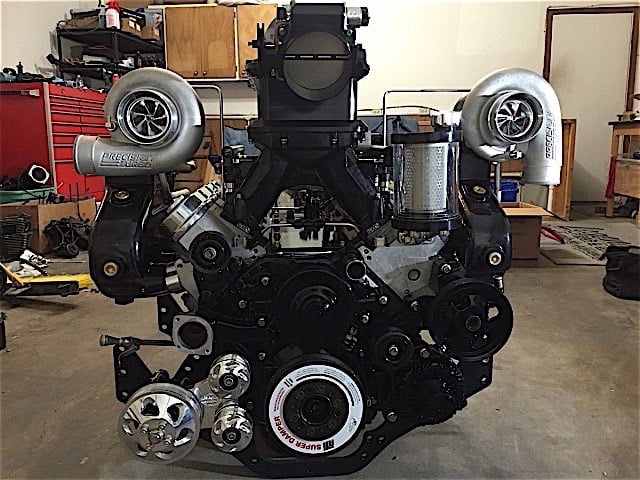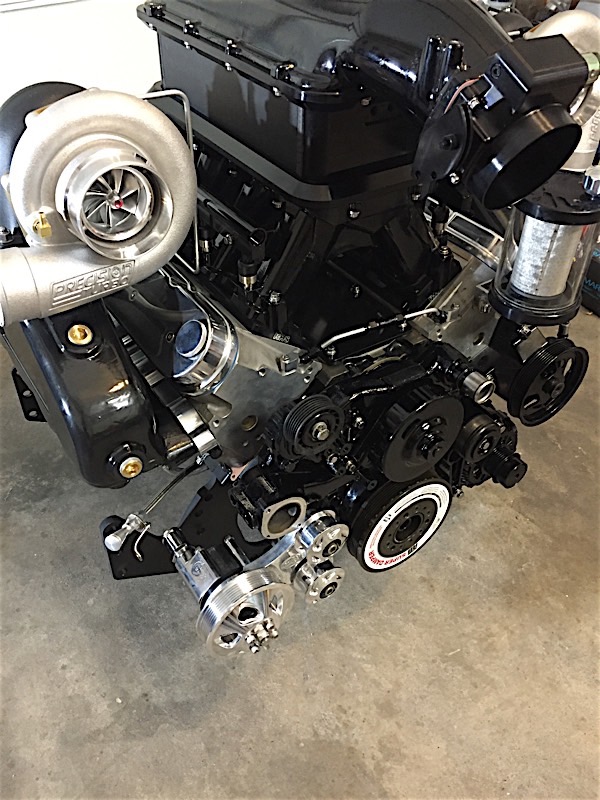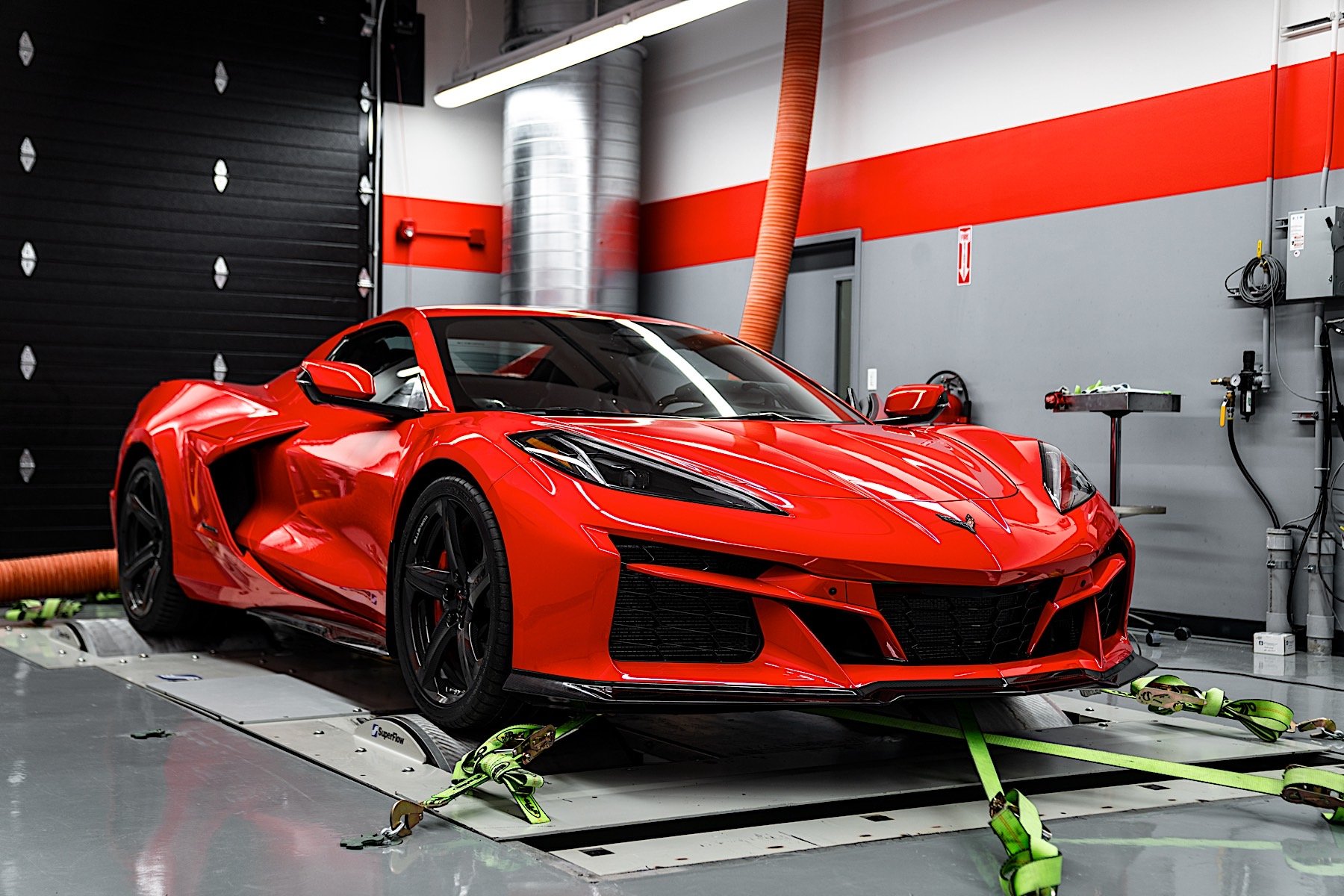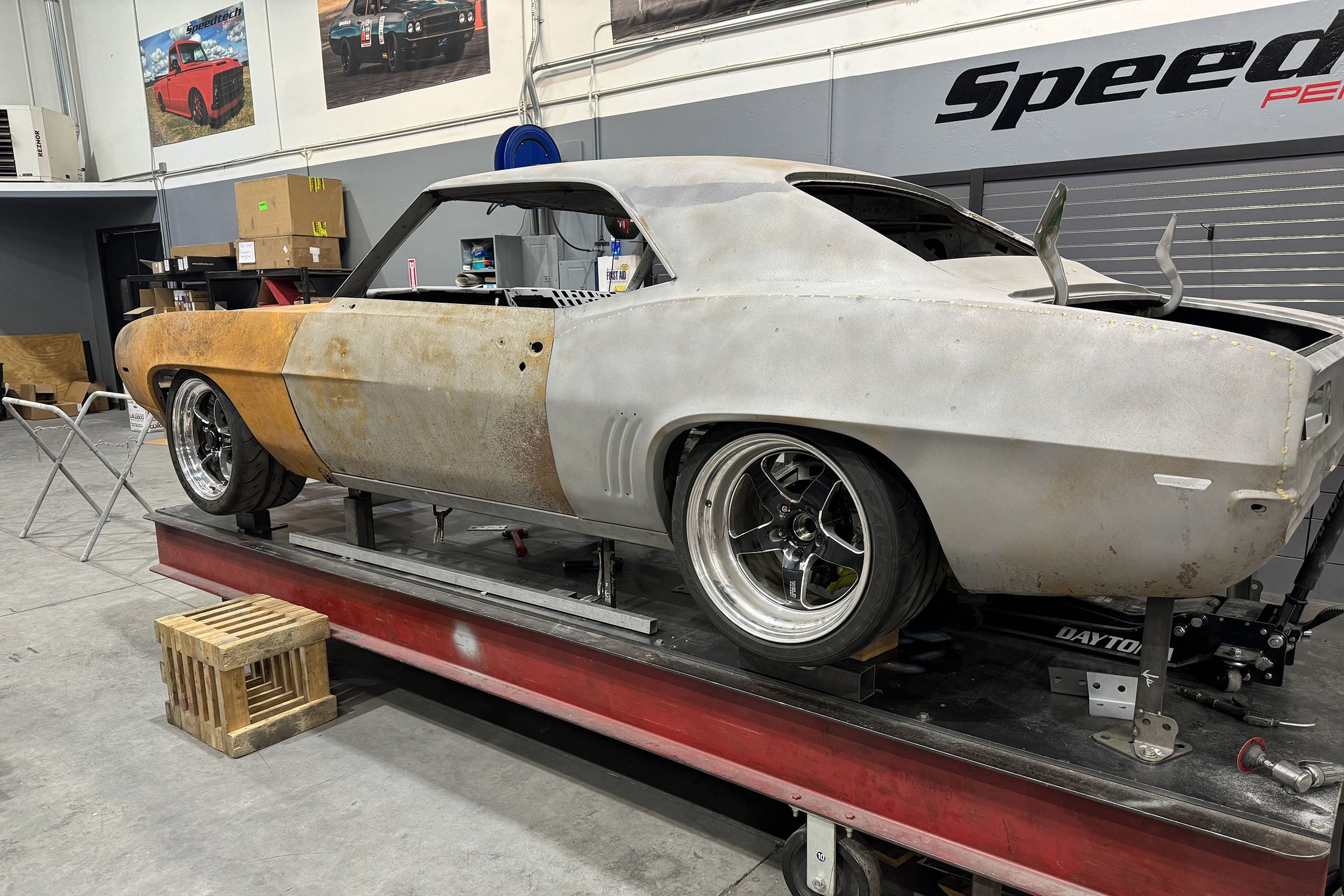We are used to seeing 1,000+ horsepower LS builds powering everything from drag cars to dune buggies, but it’s not often that we send a lot of love to our seafaring crowd. This, however, is one aquatic based power plant that we just couldn’t pass up.
Kansas-native John Zubeck recently decided that it was time for a change to his twin-big-block powered boat, and chose instead to focus on increasing reliability and fuel efficiency while decreasing weight. And what else makes more reliable horsepower than an LS? Not much these days.
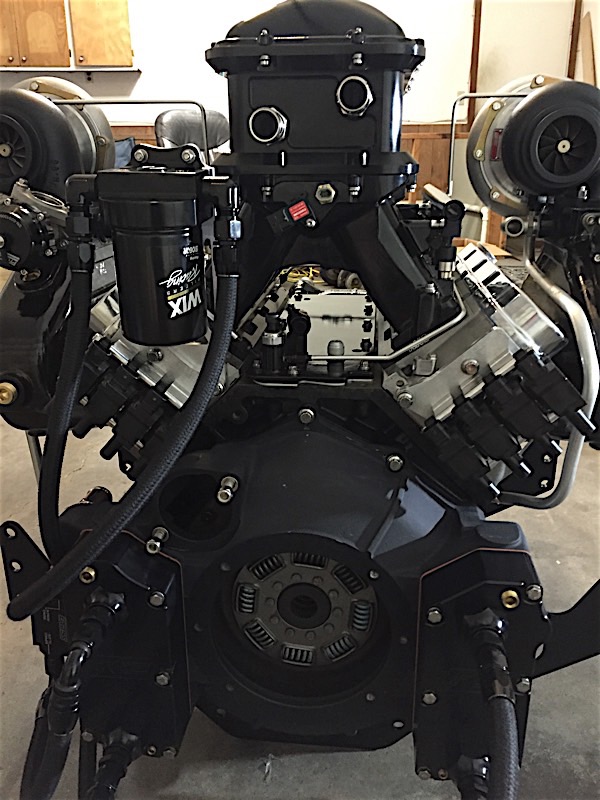 “It’s something that hasn’t really been done and I wanted to test the reliability of a large-displacement LS in the marine industry,” said Zubeck. “In this application, you’re running higher rpm for longer and when you have a failure, it’s usually in the valvetrain, and LSs have a good valvetrain.”
“It’s something that hasn’t really been done and I wanted to test the reliability of a large-displacement LS in the marine industry,” said Zubeck. “In this application, you’re running higher rpm for longer and when you have a failure, it’s usually in the valvetrain, and LSs have a good valvetrain.”
According to Zubeck, the majority of the marine world is powered by big-block Chevys and he preferred to try something that made more power and cut down on weight at the same time.
“The boat we are putting it in used to be a twin-big-block engined boat and is now being converted to just the single LS,” said Zubeck. “It’s a 35-foot boat so it’s going to need the extra power to push it.”
With the daunting task of replacing two big-blocks with one new-gen small-block, Zubeck decided to pull out all the stops.
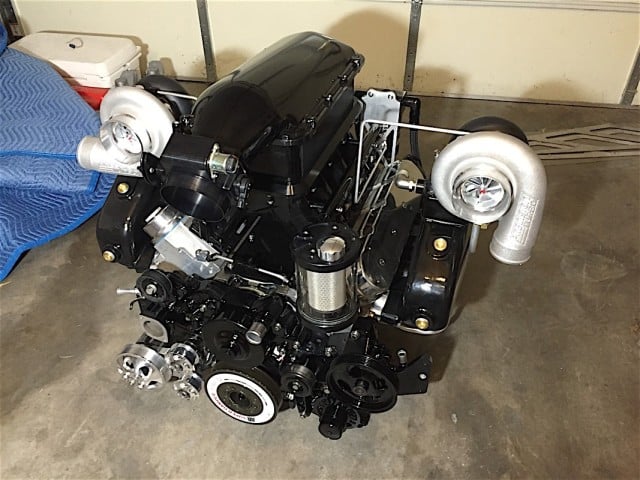 He started with an LSX tall deck Bowtie block from Chevrolet Performance which he stuffed with a 4.0-inch Callies Magnum 4340 forged-steel crankshaft. Forged 4330 steel Callies Ultra I-Beam connecting rods channel the bang from 4.125-inch custom Diamond pistons that feature a proprietary double-coat.
He started with an LSX tall deck Bowtie block from Chevrolet Performance which he stuffed with a 4.0-inch Callies Magnum 4340 forged-steel crankshaft. Forged 4330 steel Callies Ultra I-Beam connecting rods channel the bang from 4.125-inch custom Diamond pistons that feature a proprietary double-coat.
RHS CNC-ported LS7 heads are stuffed with custom Ferrea Super Alloy valves that, along with the combustion chambers and exhaust ports, have been coated in ceramic. A Holley LS7 Hi-Ram intake manifold handles induction duties and is fed by twin Precision Turbo 6870 Gen 2 CEA ball bearing turbochargers — a relatively conservative turbo choice considering the scope of the build, but a quicker-spooling snail was preferred.
Katech Piston Squirters were added to help keep the slugs cool and all machine work, and some assembly, was handled by Mercer Machine and Performance out of Lawrence, Kansas. Zubeck mentioned that they could have gone larger on the build but wanted to retain as much reliability as possible. Keeping the motor at “just” 427 cubic inches allowed the use of a more stout piston.
 “That’s another reason why we kept it at 427, instead of going bigger, so we didn’t have to stroke it any further and could keep the taller, thicker pistons,” Zubeck said. “We didn’t want to have to worry about the possibility of breaking one.”
“That’s another reason why we kept it at 427, instead of going bigger, so we didn’t have to stroke it any further and could keep the taller, thicker pistons,” Zubeck said. “We didn’t want to have to worry about the possibility of breaking one.”
A custom 5 1/2-inch anodized intercooler from Retter Engine Development rated up to 2,500+ horsepower ensures that the mill receives the coolest air possible at all times and its finish ensures that the aquatic environment it will live in doesn’t damage it.
On pump gas, this beast should be capable of easily producing enough power to replace both former big-blocks, and will likely be capable of producing 2,000+ horsepower on race gas.
“The engine is built to run on two tunes, like a lot of marine engines are, one on pump gas and one on race gas,” Zubeck said. “It should make 1,200-1,400 horse on pump gas and we are hoping to get 2,000 or more on race gas.”
In marine applications, camshaft are typically smaller due to the increased focus of horsepower and torque under the curve as opposed to the focus on peak numbers as in other non-marine applications, according to Zubeck. This means the mill is running a fairly mild cam and could be capable of producing well north of 2,000 horsepower if it was optimized for peak numbers. However, even with the compromise on the camshaft, Zubeck wouldn’t be surprised to see it go well over the 2,000-horsepower mark.
“We’ll see, but everything is there to go over 2,000,” Zubeck said. “I’ve seen similar builds make more than 2,200 horsepower.”
The engine will see boost pressure as high as 35 pounds if pushed on its race gas tune, but will see a relatively conservative 12-14 psi on pump gas.
One thing is for sure, no matter what octane this power plant has pumping through its veins, it will have more than enough grunt to bring any boat up to speed in no time. You know the old saying: 1,000 if by land, 2,000 if by sea.
Zubeck’s LS will hit the dyno soon so stay tuned for an update on what it officially puts out.



